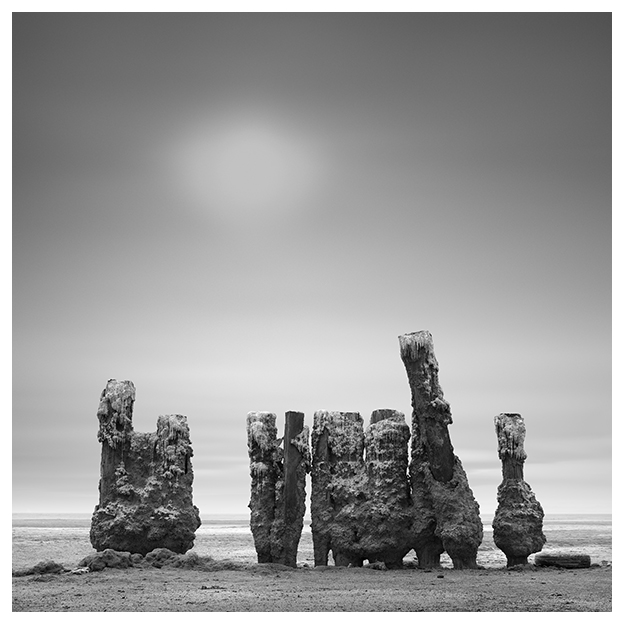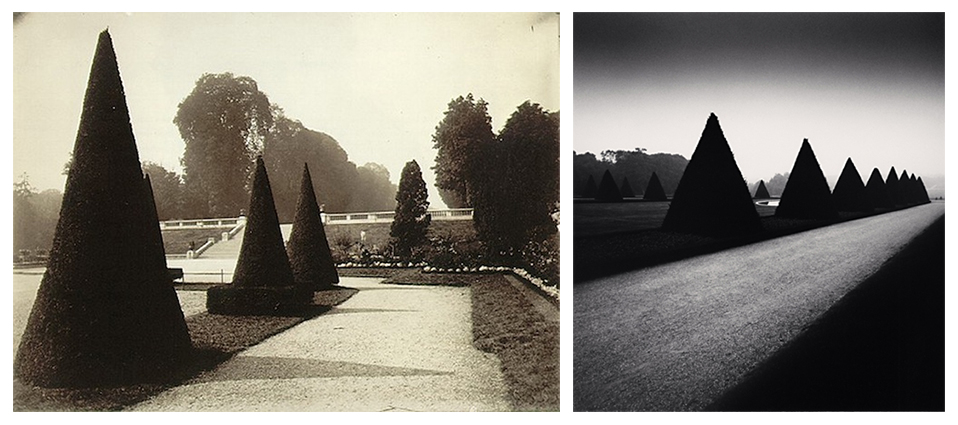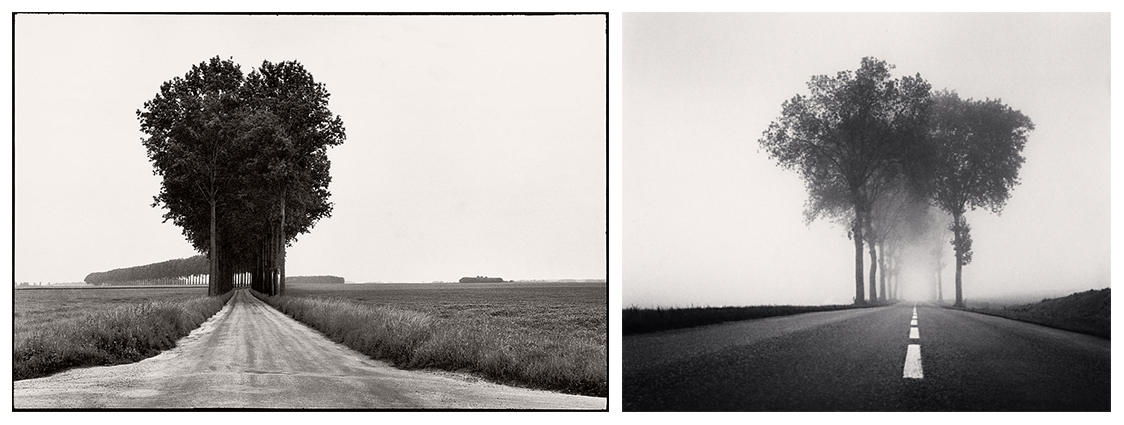Inspiration is a complex subject, and it’s not usually discussed alongside accountability. I’ve been thinking about both lately.
Throughout history, human beings have been guilty of over-romanticizing the role of inspiration in creative endeavors. On one hand, I can’t deny the role it has played in my own work. Whether inspiration comes in the form of experiencing visual art, music, literature, nature, a meaningful relationship, or any other form of sensory, intellectual or spiritual practice, I am indeed affected by the things I expose myself to. On the other hand, I completely agree with artist Chuck Close who said:
Waiting for inspiration to strike can be a creativity killer. When inspiration does come, paying too much attention to its object can make an artist’s work derivative, especially when the object is another work of art. As with most things, there’s a balance somewhere in-between.Inspiration is highly overrated. If you sit around and wait for the clouds to part, it’s not liable to ever happen. More often than not, work is salvation.
Inspiration in Practice
I think inspiration can often be found by simply slowing down and practicing awareness. Not necessarily looking for it, but allowing yourself to really experience what is around you until something speaks. My favorite kind of inspiration is the kind that forces you to adapt across the senses or translate it to a different medium. For example, a poet inspired by the surrounding landscape must search her vocabulary to find a metaphor worthy of translating the beauty experienced by sight into words. Finding inspiration within one’s working medium doesn’t necessarily facilitate the same natural transformation. For example, a photographer who is inspired by another photographer’s work in the same genre may be more likely to regurgitate a derivative work rather than transforming his inspiration into something new and personal. I’m not saying it can’t be done, but it certainly takes much more intention. It can be hard to resist the temptation to try and be like your heroes. As a lover of photography, I try to be especially on guard about not plagiarizing photographers whose work has influenced me.

If you’ve been reading my blog for any length of time, you know that I’m pretty transparent about myself and my processes. In my blog I often reflect on what I was trying to do and why I made certain design choices, as well as external factors that affected the creation of my work. On Facebook, Twitter and Pinterest I regularly post work by photographers and other artists I’ve been inspired by, both master and contemporary. Part of the reason I do this is to hopefully expose a larger audience to these artists whose work has brought me joy. Another reason is that I want to be open about the fact that their work has likely informed mine in some way, lest I fail to personally translate my inspiration enough and create something too derivative. It’s a form of public transparency and accountability that I’m glad to hold myself to so that my work hopefully maintains integrity.
My Inspiration
I am often inspired by philosophical and spiritual questions, and the transformation they bring about in me as I wrestle with them. I also recognize music and the arts in general as contributing to my life in many ways. As mentioned above, I’ve also been inspired by other photographers. One photographer I’ve been consistently inspired by is Michael Kenna. His work is diverse and spans more than five decades, but he manages to stay relevant and continues to this day making images that are timeless and exceptional. On at least two occasions I can recall, a friend has picked up one of my Kenna coffee table books and mentioned that they can see how his work has influenced mine. I don’t mind if people find a connection between my work and another photographer I’ve appreciated, we are all products of our experiences, after all. But I would hope that my personal mark is strong and consistent enough that each image I create also makes sense within the context of my own body of work. I hope that my work speaks to something more than “I like Kenna’s work.” If not, I’m ready and willing to hear it.

An Unnamed Photographer and His Copycats
There is another photographer whose work I used to be excited about, but that I seem to be losing interest and respect for lately. I won’t name that photographer here because I’m not out to slander or shame anyone. The only reason I bring it up is that it has helped me to ask these questions and become more aware of the role inspiration plays in my life.
This unnamed photographer freely mentioned early in his career that one of the reasons he was inspired to take up photography and pursue a specific genre was upon seeing Michael Kenna’s work in an art gallery. My first thought was, “cool, me too!” The stylistic and subject matter influence from Kenna was abundantly clear but I could also see where he had started to develop his own aesthetic. However, after many years of making images in that style and successfully working to establish a brand and market for himself, he suddenly started changing his answers in interviews. He now claims that what inspired his early work most was the abstract paintings of Mark Rothko. When recently asked if other photographers have inspired him, he basically said no.

Now, I don’t ultimately care who an artist was or wasn’t inspired by. While it can certainly help to provide context for their work in some cases, I don’t think it is something you must know to appreciate the work. What bothers me about the photographer I mentioned above was the lack of transparency. It just seems like a marketing ploy. Admitting that his photographs were inspired by similar photographs made by a more established photographer might make him sound like a copycat, and I can understand not wanting to bring that kind of scrutiny on oneself. But if that is his fear then he needs to work harder at making his work more honest and distinct. Citing an abstract painter, however, suggests that his inspiration has been transformed through a different medium with insightful intent and more originality. That is the esoteric and often phony side of the art world that just leaves a bad taste in my mouth. Or, maybe it’s true that Rothko’s work really is his biggest muse, I’m only speculating. But there definitely seemed to be a shift in transparency and humility as this photographer gained acclaim.
I’ve also started to become bored with his work because I’m seeing the same thing from him over and again. It’s become very formulaic. He now has his own legions of blatant copycat photographers (see below). It looks like they all took the same workshop or used the same recipe. I can’t imagine anything more defeating as an artist than having a whole portfolio of images that look the same as another person’s work. Very few, if any, of these copycats claim this photographer as an influence, though it’s clearly obvious and I know for a fact some of them have taken workshops with him. All three of the photographers pictured below have entire portfolios dominated by soft skies and water (represented by pale grey gradients) with something sticking out of the water. Many of them have photographed the same locations. There are many more portfolios just like these three; it’s a style that’s quite in vogue now (many of them also now cite Rothko as an inspiration, ha-ha!).

Back to a Better Role Model
I once heard Michael Kenna joke in an interview that he accidentally started the “sticks in water” photography genre. At least he had a sense of humor about the fact that so many people have mimicked his work. He doesn’t seem to take himself too seriously, either; I’ve never heard him wax esoteric about his work. Even though he has indeed made some lovely “sticks in water” photos (see Five Poles above), he has explored many different subjects over the years with his keen eye and strong sense of minimalist design. He has cited the simplicity and brevity of Japanese haiku poems as an inspiration for his minimalist work. Kenna was also influenced by photographers who came before him. But the difference between him and the photographer I’ve critiqued above, is that Kenna has been forthcoming in citing his influences, even blatantly paying homage to them in his own way:



There is a certain playfulness to the fact that Kenna so blatantly paid homage to the photographers he admired, but I also see that his images are distinctly done in his own style and are just a few examples among many years of excellently crafted images. I don’t see that he set out to copy their ideas and pass them off as his own. He didn’t center his entire aesthetic around one photographer’s style. The very fact that he named his muses in his titles makes me certain that he was indeed honoring their work by representing how they had influenced his own, rather than merely mimicking them. In so doing he welcomes the comparison.
Keep in mind that all of Kenna’s shots were made long before the internet was the resource it is today. He was likely well-versed in the work of his predecessors and had these classic images floating around in his mind. It would have been easy for him to assume that most people at the time weren’t familiar with the work of Brandt or Atget, and passed the ideas off as his own. But he didn’t. That’s integrity.
Wrapping it Up
At the end of the day, it doesn’t matter to me if inspiration comes from a song or a sunset. It doesn’t matter if inspiration comes from a different discipline or an artist in the same medium and genre. It might be silly for me to become so annoyed with that other photographer for not acknowledging his roots once he became successful, but I suppose it reveals that integrity matters to me more than clever and pretentious art-speak. It has made me aware of and more intentional about making sure I’m being true to myself in my creative endeavors rather than chasing someone else’s aesthetic (and I have been faced with this temptation many times).
So, to what little audience I may have, I will continue to be as transparent as possible. I welcome any criticism that my work may earn for bearing too close a resemblance to the sources of my inspiration. I hope that, while there may be common threads, my work will continue to evolve over the years and not become formulaic. I will continue to look for inspiration in all aspects of daily life. I also commit myself to continue to show up and work, even when I don’t feel the creative spark of inspiration. Thanks for processing with me.
[Additional inspiring artists that immediately come to mind: Josef Hoflehner, Arno Rafael Minkkinen, Hengki Koentjoro, Cole Thompson, Saul Leiter, Edward Weston, Safwan Dahoul]



4 Comments